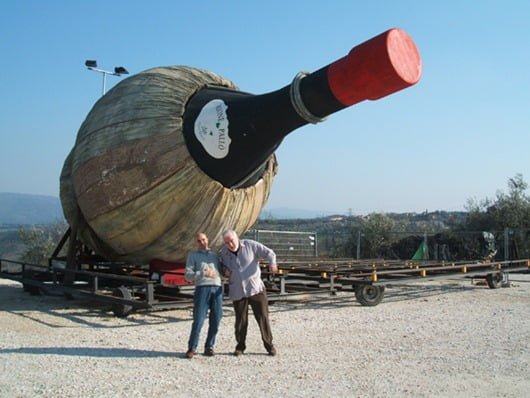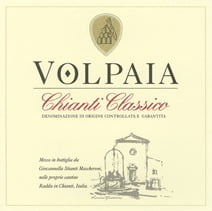The Difference Between Chianti, Chianti Classico and Chianti Riserva
May 25, 2011First-off, I don’t know where the above photo was taken, but once I find out I’m booking a plane ticket!!!
So last night, I found myself hosting an informal wine class for a discerning group of tasters here in Jacksonville. The theme of the night was Tuscany, and so I decided to put a heavy emphasis on Chianti, as it goes without saying that it’s Italy’s most famous wine (possibly their most famous export). As the tasting / wine class began, the questions started rolling in, and I noticed that they all seemed to follow the same theme:
“What’s the difference between the various styles of Chianti?”
”Should one be more expensive than the other?”
”What is a DOCG?”
Without going off on too much of a tangent here, I would just like to point out how unreliable the Internet can be when trying to learn about wine! Before the class started I went to a few of my trusted websites and started doing a little research into whether they have changed any laws in Chianti in the last year. What I noticed was that how very little information there was explaining the difference between Chianti’s, and what was available wasn’t very to-the-point.
My bold statement here is that what you are reading right now, is the most clear and concise definition as to the various types of Chianti on the Internet. Period.
Before we get started, it’s worth pointing out that in Tuscany the Sangiovese grape is king. If you’re drinking Chianti, Sangiovese is the majority grape in that bottle. That’s a pretty straight-forward fact, right? Well not exactly. It’s also worth mentioning that Sangiovese goes by a bunch of other synonyms in Tuscany, including but not limited to; Brunello, Montepulciano (not to be confused with Montepulciano from the Abruzzo region), Morellino, Pignolo, and Prugnolo Gentile. However, we’re only dealing with Chianti right now, so let’s stay focused on Sangiovese!
Now that all that’s out of the way, let’s get this thing started!
Chianti
This is that most generic of all Chianti’s; “Chianti Regular” if you will! Now, that’s not to say they’re all bad, but for the most part, they are usually the least exciting of the bunch.
Bottles simply labeled as Chianti (as in the photo) are made from a mix grapes from several regions in the Chianti region. The main difference with generic Chianti and the rest, is that the minimum percentage of Sangiovese allowed is 75%, with the rules permitting white grapes to be blended in. Adding white grapes to a red wine isn’t as crazy as you might think! The French have been adding Viognier to their Syrah in the Rhone region of France for decades. The reason they do so is to soften the tannin in the Syrah, and to add what they call “aromatic complexity”. The addition of white grapes into the Sangiovese mix however, is less about romance and more about cutting costs.
As with all Chianti’s, there are some minimum rules set, i.e. the minimum alcohol level in regular Chianti is 11.5%, and grape harvest yields are “restricted” to 4 tonnes per acre.
Chianti Classico
The Chianti Classico region is central to the region and arguably the most famous. In 1996 it was awarded DOCG (Denominazione di Origine Controllata e Garantita) status, in an effort to raise its perceived quality. All Italian DOCG wines are actually tasted and analyzed in a lab in order to meet government approval. Kind of like SAT exams for wine. If the wine passes, it will receive a individually numbered governmental seal across the cap or cork.
Chianti Classico’s are also the wines that you will see bearing a black rooster on the neck of the bottle. This is a conglomeration of Chianti producers whom have setup the Consorzio Chianti Classico, in a bid to improve the quality and reputation of the region.
The minimum percentage of Sangiovese allowed in Chianti Classico is 80%, with only red grapes permitted to make up the rest of the blend. Producers can of course choose to make their wine up to 100% Sangiovese, but it’s the exception and not the rule. The alcohol content must also be at least 12%, and the wine must spend at least 12 months aging in oak barrels. The Chianti Classico region covers an area of around 100 square miles, and the grape harvest is restricted to no more than 3 tonnes per acre.
Chianti Riserva / Classico Riserva
If you guessed that Riserva is Italian for Reserve you would be correct! See!!! You’re already speaking Italian!!!
Riserva on a bottle of Chianti is your first clue that the bottle of Chianti you’re holding, stands head and shoulders above the rest. Riserva is a term that can be applied not just to Chianti, but to plenty of other Italian wines such as Brunello and Barolo. Of course, just to make things difficult, it has various meanings, but Riserva on a Chianti just means that the wine spends a minimum of two years (in oak) and three months (in the bottle) aging. The alcohol content must also be at least 12.5%. Chianti Riserva is also a great candidate for additional bottle aging, depending on the producer and vintage.














